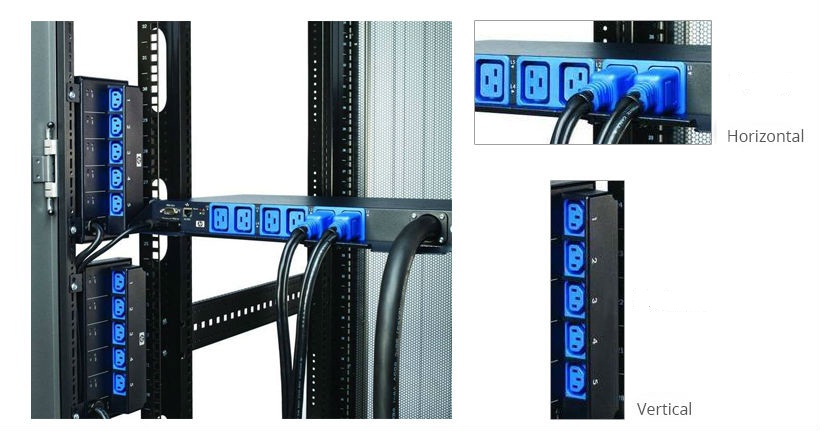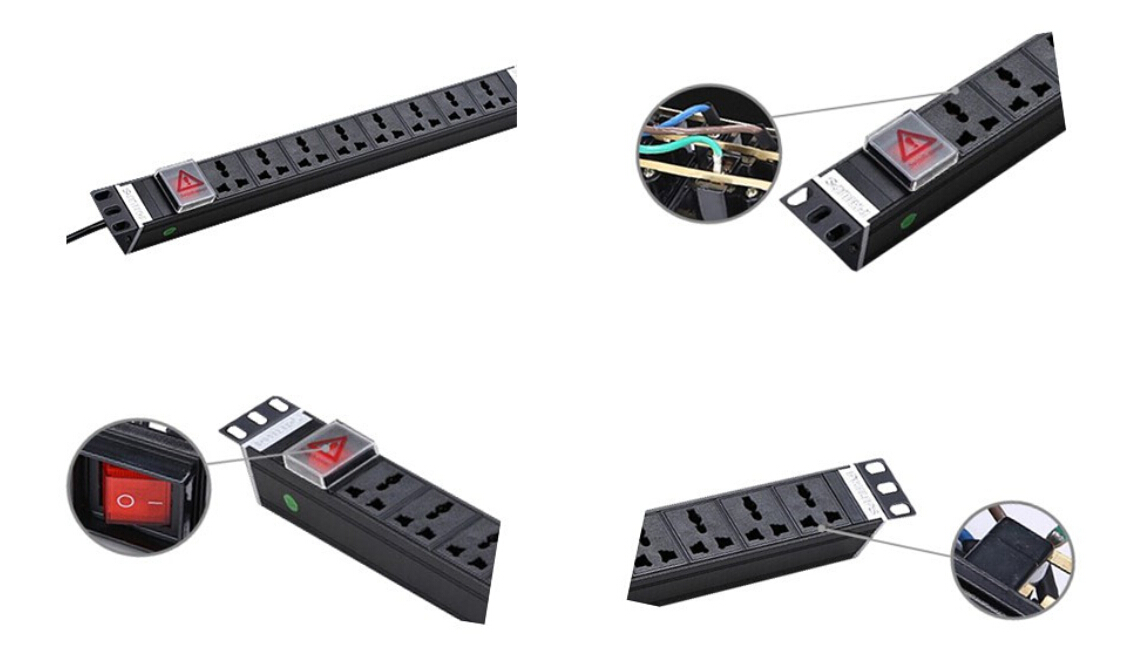The tendency to increase server and rack power densities has inevitably led to cable and power management complexities. And this is a huge problem that many data center managers may encounter. Thus, to implement a power distribution unit (PDU) serves as a vital primary step in simplifying cable management and powering your high-density network environment. It means that when you demand for reliable, flexible and easy-to-install power distribution to maximum network uptime and to save energy costs. PDU can be an optimum solution for you.
A power distribution unit (PDU) is a type of electrical component that distributes and manages electricity supply to computers, servers and networking devices within a data center. It is known that in a network environment, servers, storage and networking equipment can only operate when there is power to drive them. Thus, a PDU provides a central unit to control and distribute electricity, and supply to the rack via multiple outlets to the rack’s servers and critical IT equipment.
Capable of managing and distribute large amount of electricity, PDU is usually directly installed in the rack. Moreover, it can also be connected and accessed over the network or in the remote distance, and provide statistics and data on the power usage effectiveness (PUE).

PDU is designed for simpler and more cost-effective power distribution. And it obtains the following several advantages:
Simplify deployment: The PDU features space-saving, which conserves precious space for network applications, effectively simplify cable management complexities and increase system accessibility. And ultimately contributes to reducing installation time.
Minimize downtime: Rack environments nowadays are more inclined to continuously increase power density. And it happens sometimes to add load in the wrong place and trigger an overload event. The PDU, however, is capable of minimizing this impact to maximum your uptime, achieving high network availability.
Increase power density: PDU is designed to fix your problems of high-density data center environment, and to meet the requirements of your most power-demanding and highest-availability systems.
Streamline cabling: By connecting multiple rack devices to a single PDU using short, easy-to-manage cables, you can significantly reduce the number of power cords extending from the rack to the wall, alleviating clutter and simplifying power distribution.

Apparently, the cost concerning energy consumption can be the biggest operating expense in your data center. And here comes to the main purpose of this article: how to improve energy efficiency by the adoption of PDU? Today’s PDU allows data center managers to monitor power use, energy efficiency and environment condition. So, it is possible to make powerful, well-informed decisions to lower energy usage, without negatively impacting data center performance or reliability. There are basically five ways.
PUE helps data center engineers determine energy efficiency by measuring how effectively data centers use input power. It provides insights into efficiency efforts, and can also help determine when something has gone wrong. PDUs can provide power data and help you calculate PUE at a granular level. Total power used in each rack can be compared to the building’s overall power usage to create the foundation for PUE calculation.
Monitoring energy usage enables you to know when consumption gets out of hand. And monitoring each of your PDUs individually would be extremely difficult. However, collecting the information in a database allows you to monitor rack-level power information, store the data, trend it and then use it to make decisions about your data center. When a PDU is reaching its total power capacity level, it can alert the data center manager before breaker capacity is reached and let him/her know that it’s time to bring in more PDUs to prevent outages to computing gears.
When you employ PDUs to perform outlet-level monitoring, you can pinpoint areas within the data center where simple equipment rearrangement may free up power or improve safety by moving equipment that is close to circuit limit. PDUs monitor temperature and other environmental conditions to make sure the performance hasn’t been compromised.
As you can calculate operating costs of each device, and know how much power each device uses, it is easier to identify the energy hogs. Meanwhile, you can also use device-level performance metrics to determine whether a more efficient device would be worth the investment. PDUs can also identify equipment that is no longer needed. For example, when a PDU indicates that a certain server is running at an average of 35% of peak power, this server can be marked to be replaced.
PDU can identify failed power supply, temperature increases, a sudden surge in power usage. When PDUs alert you to these types of environmental or performance changes via e-mail or text, you should take action before they become a major issue which would lead to downtime and lost revenue.
For each and every data center, reliability is rather critical. PDUs are able to provide robust, reliable power to rack and cabinet applications. And they enable data center managers to enhance energy efficiency by optimizing power capacity, saving large amount of cost, as well as to maximum network uptime. FS.COM offers a wide range of PDUs that are distinguished by their quality, dependability and versatility in electrical applications. Our PDUs are designed specifically to help data center professionals meet rapidly escalating power requirements. For more information, visit www.fs.com.




